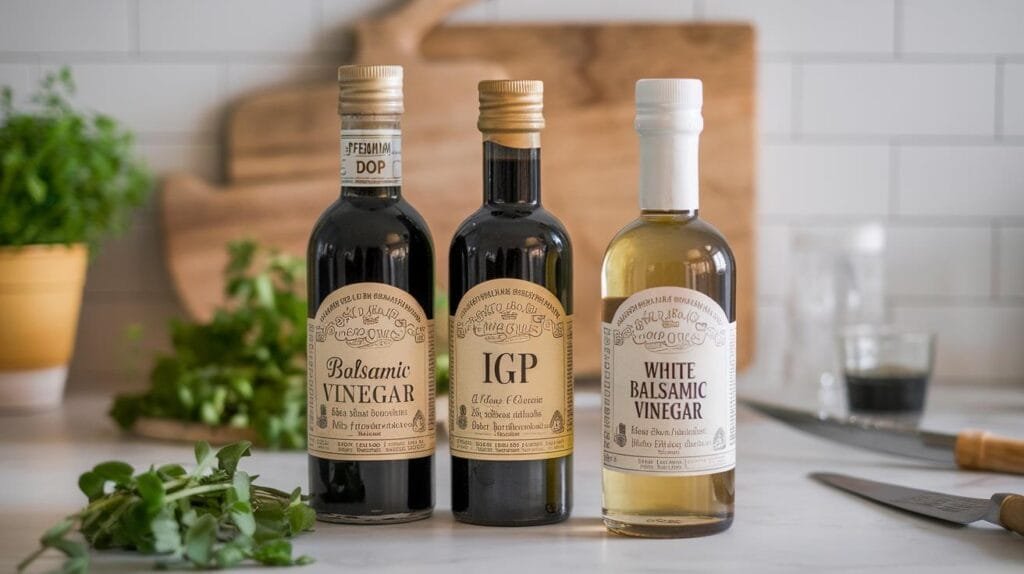When you think of Italian cuisine, the mind instantly drifts to pizza, pasta, and… balsamic vinegar. Yes, this tangy, dark elixir has earned its spot as a culinary icon, and for good reason. But how much do you actually know about it? Let’s take a trip back in time to uncover the roots of this liquid gold.
Origins in Modena and Reggio Emilia
Balsamic vinegar, originating from Modena and Reggio Emilia, represents more than just a condiment—it’s a tradition and symbol of Italian heritage. This culinary treasure, with its roots tracing back to the Middle Ages, was once used as a tonic for ailments like sore throats. The unique climate of these regions—featuring warm summers and cool winters—plays a pivotal role in crafting authentic balsamic vinegar. Similarly, the art of culinary traditions lives on in hearty dishes like the 4-Ingredient Potato Soup, a simple yet comforting recipe perfect for showcasing quality ingredients.
These regions aren’t just lucky by chance. The climate of Modena and Reggio Emilia, with its warm summers and cool winters, creates the perfect conditions for aging balsamic vinegar. Combine that with centuries of passed-down expertise, and you’ve got yourself a recipe for culinary magic.
Traditional Production Methods
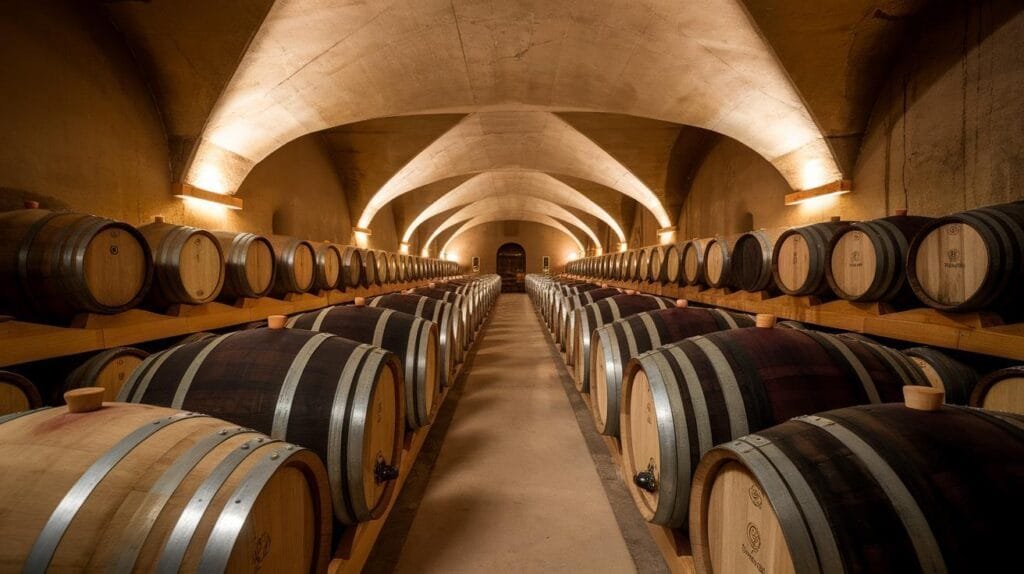
Authentic balsamic vinegar doesn’t just happen overnight. In fact, it’s the very opposite of a quick fix. True balsamic vinegar, known as Aceto Balsamico Tradizionale, can take decades to mature. Yes, decades. The process starts with freshly pressed grape juice, also called must, which is cooked down into a concentrated syrup. This syrup is then aged in a series of wooden barrels—each made of different types of wood like cherry, oak, and chestnut.
Why so many barrels? It’s all about layering flavors. Over time, the vinegar absorbs the unique aromas and characteristics of each wood, creating a depth of flavor that’s nearly impossible to replicate. Patience is key here, and trust me, the wait is worth it.
What Makes Balsamic Vinegar Unique?
So, what’s the big deal with balsamic vinegar anyway? Can’t you just grab a bottle off the shelf and call it a day? Not quite. There’s a world of difference between traditional balsamic vinegar and the commercial versions you’ll find in most grocery stores.
Differentiating Traditional and Commercial Balsamic Vinegar
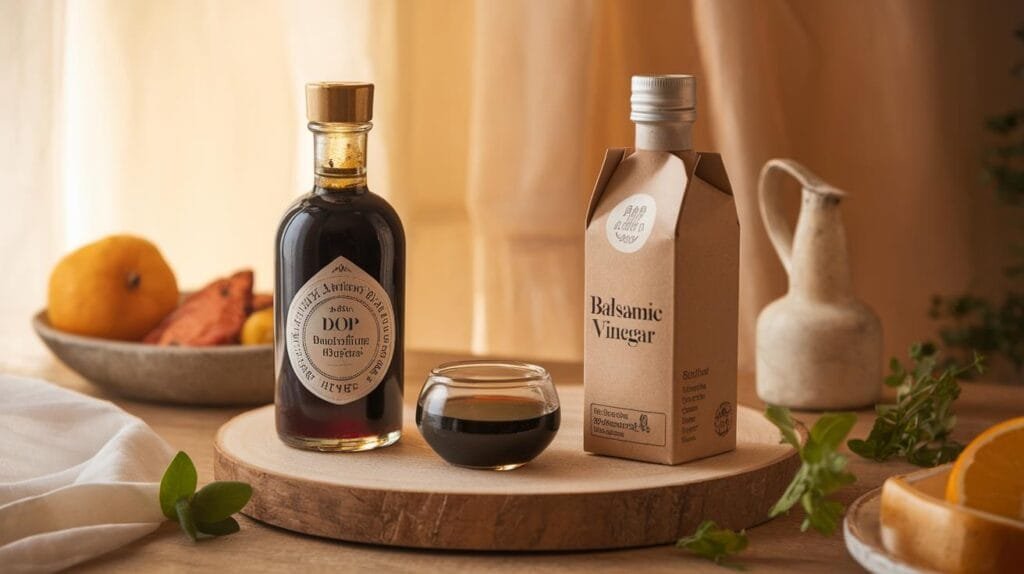
Not all balsamic vinegars are created equal, and understanding the difference can transform your culinary creations. Traditional balsamic vinegar (labeled DOP) undergoes decades of meticulous aging, offering a thick, syrupy texture and complex flavor profile. On the other hand, commercial varieties are often mixed with additives and lack the authenticity of the traditional versions. This distinction mirrors the careful attention required to craft dishes like Olive Garden Zuppa Toscana Soup, a hearty meal bursting with flavor and made from scratch.
Commercial balsamic vinegar, on the other hand, is a different beast altogether. It’s often made by mixing wine vinegar with caramel coloring, thickeners, and sugar. While it’s more affordable and works just fine for everyday cooking, it lacks the depth and authenticity of the real deal.
Key Ingredients and Aging Process
What sets balsamic vinegar apart from its vinegar cousins is the simplicity of its ingredients. At its core, it’s just grape must. No added sugars, no preservatives—just nature doing its thing. The aging process, however, is where the magic happens. Over years (or even decades), the vinegar is exposed to air and slowly thickens, developing a balance of sweet and tangy notes that’s downright addictive.
Types of Balsamic Vinegar
Now, let’s talk types. Not all balsamic vinegar is created equal, and understanding the differences can help you pick the perfect bottle for your needs.
Traditional Balsamic Vinegar (Aceto Balsamico Tradizionale)
This is the crème de la crème of balsamic vinegar. Aged for at least 12 years (and sometimes as long as 25), it’s intensely flavorful and best enjoyed drizzled over fresh strawberries, Parmesan cheese, or even vanilla ice cream. Yes, you read that right—ice cream.
Balsamic Vinegar of Modena (IGP)
A step down in terms of aging and complexity, but still a solid choice. IGP balsamic vinegar is made using a mix of grape must and wine vinegar. It’s perfect for salad dressings, marinades, or a quick splash on roasted veggies.
White Balsamic Vinegar
If you’ve ever wondered about that pale, golden balsamic vinegar, this is it. White balsamic vinegar is made by cooking the grape must at a lower temperature to preserve its light color. It’s milder and less sweet than traditional balsamic, making it a great choice for delicate dishes.
Benefits of Using Balsamic Vinegar
Beyond its rich flavor, balsamic vinegar boasts numerous health benefits, thanks to its antioxidants and anti-inflammatory properties. It can even help regulate blood sugar levels and promote heart health, making it a pantry staple with more than just culinary uses. Its versatility shines when paired with dishes that highlight both health and taste, such as the Shepherd’s Pie Soup—a comforting blend of hearty ingredients that deliver both nutrition and satisfaction.
Health Benefits
Balsamic vinegar isn’t just delicious; it’s surprisingly good for you too. Rich in antioxidants, it can help reduce inflammation and combat free radicals in the body. Some studies even suggest it may help regulate blood sugar levels and improve heart health. It’s like a little bottle of wellness, right in your pantry.
Culinary Versatility
What can’t balsamic vinegar do? Use it to brighten up a salad, glaze a piece of salmon, or even add depth to a stew. Its versatility is unmatched, making it a must-have for cooks of all skill levels.
How to Use Balsamic Vinegar in Your Kitchen
Balsamic vinegar is like the Swiss Army knife of your pantry—there’s almost nothing it can’t do. Whether you’re whipping up a quick weeknight dinner or crafting a gourmet masterpiece, this versatile condiment can elevate any dish with its signature tangy-sweet punch.
Perfect Pairings with Foods
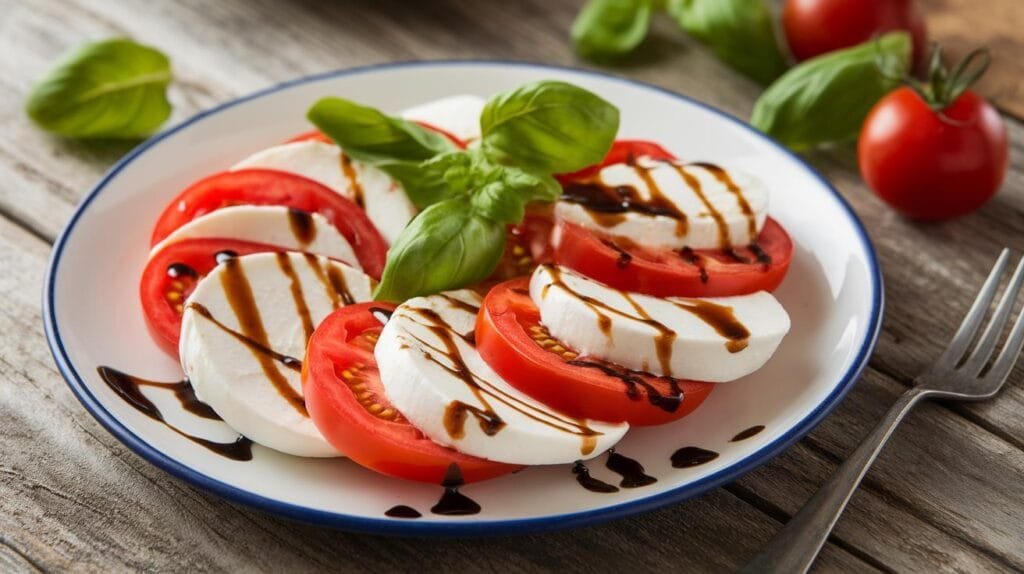
Let’s talk about match-made-in-heaven pairings. Balsamic vinegar loves to mingle with all kinds of ingredients, but there are a few combos that stand out. Imagine the rich, syrupy drizzle of balsamic over ripe tomatoes and fresh mozzarella—classic Caprese salad perfection. Add a splash to roasted Brussels sprouts or sweet potatoes, and suddenly, those veggies become irresistible.
Love cheese? Balsamic vinegar pairs beautifully with aged varieties like Parmesan or Pecorino Romano. And don’t forget desserts! Yes, balsamic vinegar over vanilla ice cream or fresh strawberries is a revelation. It’s one of those “don’t knock it until you try it” moments.
Recipe Ideas for Everyday Cooking
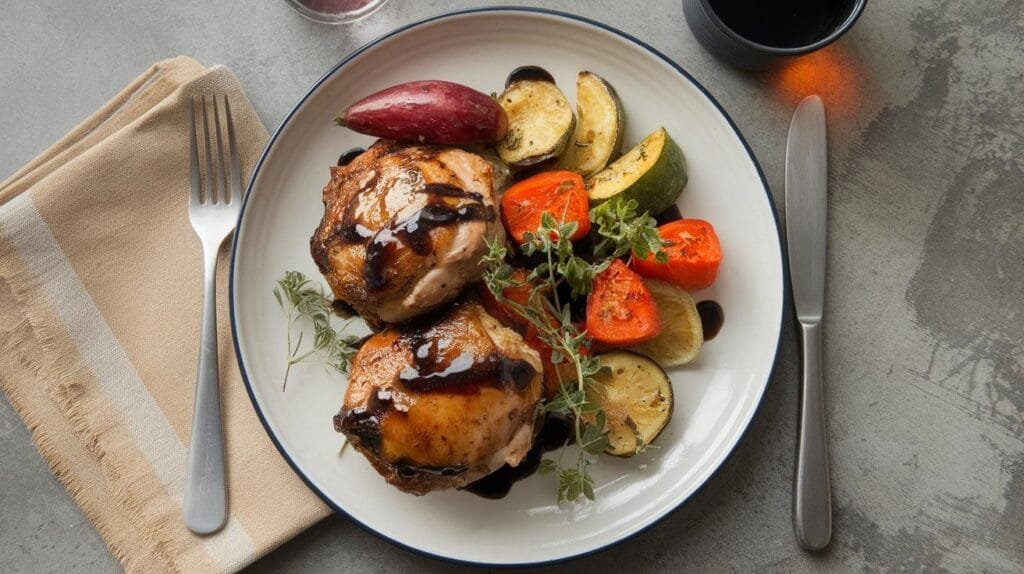
Ready to roll up your sleeves? Here are a few ideas to get you started:
- Balsamic Glazed Chicken: Brush balsamic vinegar mixed with honey and garlic over chicken thighs and bake until caramelized and juicy.
- Roasted Veggies with Balsamic Drizzle: Toss your favorite vegetables in olive oil, roast until golden, then finish with a balsamic reduction.
- Balsamic Strawberry Salad: Combine fresh greens, sliced strawberries, goat cheese, and walnuts, then dress it with balsamic vinegar and olive oil.
Balsamic Vinegar: The Perfect Italian Condiment Explained
Ingredients
- - 4 boneless skinless chicken breasts
- - 1/2 cup balsamic vinegar
- - 2 tbsp honey
- - 2 cloves garlic minced
- - 1 tbsp olive oil
- - 1 tsp dried thyme
- - Salt and pepper to taste
Instructions
- 1. Preheat a skillet over medium heat and add olive oil.
- 2. Season chicken with salt, pepper, and thyme.
- 3. Cook chicken in the skillet for 6-8 minutes on each side until golden brown and cooked through. Remove and set aside.
- 4. In the same skillet, add balsamic vinegar, honey, and minced garlic. Stir well and simmer for 2-3 minutes until slightly thickened.
- 5. Return the chicken to the skillet, coating it with the glaze. Cook for an additional 2 minutes.
- 6. Serve warm with your choice of side dishes.
Notes
The possibilities are endless, so don’t be afraid to get creative!
Storing and Preserving Balsamic Vinegar
Balsamic vinegar may be durable, but proper care ensures it stays at its flavorful best. Like a fine wine, it deserves a little TLC.
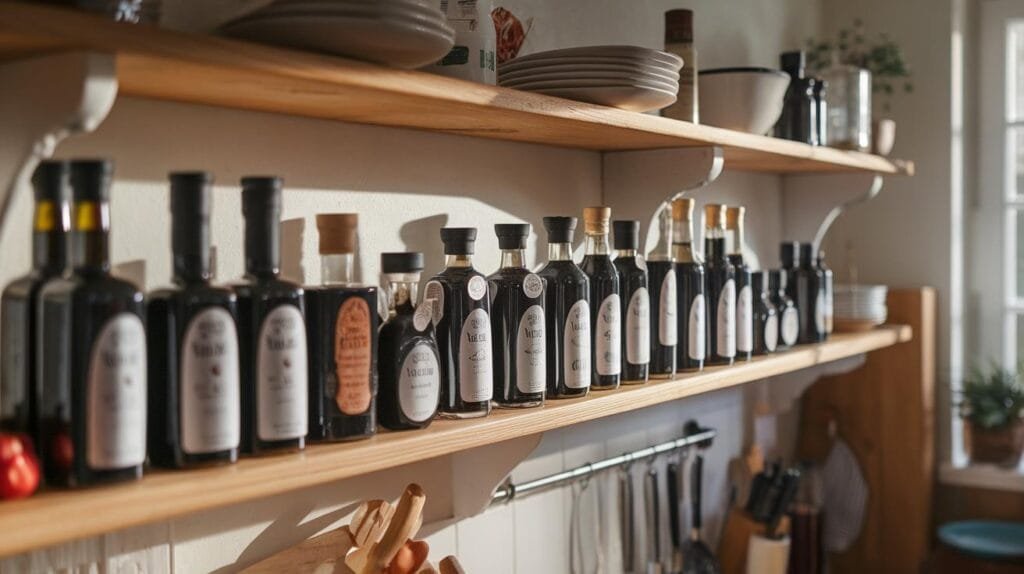
Tips for Proper Storage
First things first: keep your balsamic vinegar in a cool, dark place. Direct sunlight and heat are its enemies, as they can degrade its flavor over time. A kitchen cabinet away from the stove is ideal. Once opened, you don’t need to refrigerate it—room temperature is just fine.
Make sure the bottle is tightly sealed after each use. Why? Exposure to air can cause the vinegar to oxidize, which might dull its complex flavor. Treat it well, and it’ll reward you with years of culinary bliss.
Shelf Life and Signs of Spoilage
Does balsamic vinegar go bad? Technically, no. Thanks to its acidity, it has an incredibly long shelf life. That said, its flavor can diminish over time. If you notice a loss of aroma or taste—or if it smells “off”—it’s time to retire that bottle.
Sometimes, you might find sediment at the bottom of the bottle. Don’t panic! This is natural and harmless, especially in high-quality vinegars.
Common Problems and Solutions with Balsamic Vinegar
Even the best cooks can run into issues with balsamic vinegar. Let’s troubleshoot some common hiccups.
Why Does Balsamic Vinegar Crystallize?
Ever noticed crystals forming in your vinegar? It’s not a flaw—it’s a sign of high-quality aging. These are tartrate crystals, which can develop naturally in traditional balsamic vinegar. If they bother you, simply strain them out. Problem solved.
How to Handle Vinegar with Off Flavors
If your vinegar tastes overly sour or bitter, it’s likely a cheaper, mass-produced variety. While you can’t fix the flavor, you can mask it. Try mixing it with honey, maple syrup, or brown sugar to balance the acidity.
For vinegar that’s gone flat, a quick reduction on the stove can intensify its flavors. Just simmer it until it thickens, and you’ve got yourself a homemade balsamic glaze.
Choosing the Right Balsamic Vinegar
Not all balsamic vinegars are created equal, and picking the right one can feel overwhelming. Here’s how to narrow down your options.
Decoding Labels and Certifications
Pay attention to terms like DOP (Denominazione di Origine Protetta) and IGP (Indicazione Geografica Protetta). These labels indicate authenticity and quality. Traditional balsamic vinegar (DOP) is the gold standard, but it comes with a hefty price tag. For everyday cooking, go for IGP-certified vinegar—it’s more affordable yet still offers decent quality.
Beware of bottles labeled simply as “balsamic vinegar.” These are often commercial blends with additives. While they’re fine for basic use, they won’t deliver the complex flavors of the real deal.
Price vs. Quality: How to Decide
When it comes to balsamic vinegar, you often get what you pay for. Traditional varieties can cost upwards of $100, but they’re worth every penny for special occasions. For daily use, a mid-range bottle in the $10–$20 range should do the trick. Just remember to check the ingredients—grape must should be the first listed.
FAQs
Let’s tackle some common queries and clear up the confusion.
Are yellow potatoes and Yukon Gold potatoes the same?
Not quite. While Yukon Gold potatoes are a type of yellow potato, not all yellow potatoes are Yukon Golds. Yukon Golds have a unique buttery flavor and smooth texture that set them apart.
What is special about Yukon Gold potatoes?
Yukon Gold potatoes are prized for their versatility and natural creaminess, which makes them perfect for mashing, roasting, or baking. Their thin skin means no peeling is required—bonus!
What is the difference between russet potatoes and Yukon Gold potatoes?
Russets are starchy and ideal for baking and frying, while Yukon Golds have a waxy texture that holds up well in dishes like gratins and stews.
What type of potato is similar to Yukon Gold?
If you can’t find Yukon Golds, try Yellow Finn or Carola potatoes. Both offer a comparable flavor and creamy texture.
Substitutes for Balsamic Vinegar
Running out of balsamic vinegar when you’re halfway through a recipe can feel like a culinary disaster. But don’t panic—there are some clever substitutes you can whip up using common pantry items.
Lemon Juice and Sugar as Alternatives
For a lighter substitute, mix freshly squeezed lemon juice with a small amount of sugar. While it won’t mimic the depth of balsamic, it works well in dishes where you need a bright, acidic kick—think vinaigrettes or seafood recipes.
Soy Sauce and Molasses for Depth
If vinegar tastes overly sour or bitter, it likely comes from a cheaper, mass-produced variety. While you can’t change the flavor entirely, you can easily mask it. Mix it with honey, maple syrup, or brown sugar to help balance the acidity and improve its taste.
When vinegar loses its bold flavor and turns flat, you can quickly intensify it by reducing it on the stove. Simply simmer the vinegar until it thickens, and you’ll create a rich, homemade balsamic glaze.
Popular Myths and Misconceptions
Not all balsamic vinegars deliver the same quality, so choosing the best one can feel overwhelming. Use these tips to narrow down your options and find the perfect match for your needs.
Debunking the Sweetness Myth
Many people assume that all variations of this Italian delicacy are overly sweet, but that’s not entirely true. Traditional versions carry a natural sweetness that’s beautifully balanced by their acidic undertones. On the other hand, mass-produced options often include added sugars to mimic the authentic flavor. If authenticity matters to you, it’s always a good idea to inspect the label for unnecessary additives or artificial ingredients.
Does Aging Always Mean Better Quality?
Aging plays a significant role in crafting the finest Italian vinegars, but it isn’t the sole measure of excellence. The choice of grape varieties, the expertise of the producer, and the environmental conditions during the fermentation process all contribute to the final product’s richness. A bottle labeled as 25 years old isn’t automatically superior to a 12-year-aged one—it all depends on the artistry behind its creation.
Exploring the Global Influence
Though its roots lie firmly in Italy, this versatile condiment has made its way into kitchens around the world, inspiring chefs and home cooks alike.
Its Role in International Cuisine
In French cuisine, it’s often paired with foie gras or used to deglaze pans, creating complex and luxurious sauces. Across Asia, chefs mix it with soy sauce and sesame oil to craft flavorful marinades or dipping sauces. In the United States, it’s a favorite ingredient in barbecue glazes, salad dressings, and even modern cocktail recipes.
Unique Pairings from Around the World
Have you ever tried this culinary gem with tropical fruits like mango or pineapple? The combination is a delightful surprise. In the Caribbean, chefs use it as a finishing touch for grilled fish and shellfish, adding a subtle tang. Meanwhile, Middle Eastern dishes sometimes incorporate it over labneh or into marinades for grilled meats. The creativity it inspires knows no borders.
Conclusion
This luxurious Italian ingredient is more than just a pantry staple—it’s an experience. From its origins in Modena and Reggio Emilia to its widespread use in global cuisine, it showcases the power of pure, high-quality ingredients. Whether you’re an experienced chef or someone just discovering their love for cooking, keeping a bottle of this exceptional vinegar alternative on hand can transform your dishes into something extraordinary.
So, the next time you reach for this dark and glossy elixir, remember: you’re not merely enhancing flavors—you’re embracing centuries of tradition, passion, and culinary art. Isn’t it time to let this magical ingredient take center stage in your kitchen?

